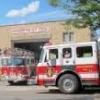
Study: Tax Savings and Economic Value of Volunteer Firefighters in New York
Started by
NorthEndExpress,
-
Recently Browsing 0 members
No registered users viewing this page.

Started by
NorthEndExpress,
No registered users viewing this page.